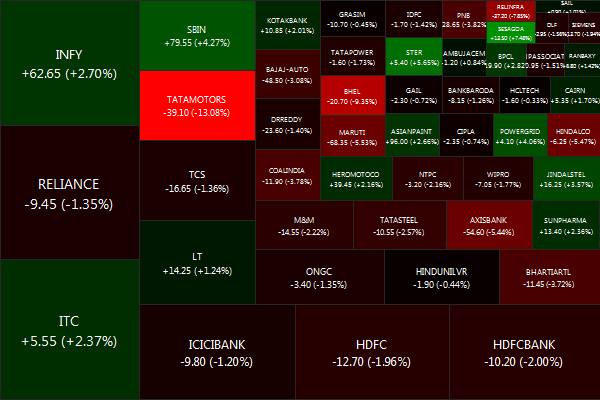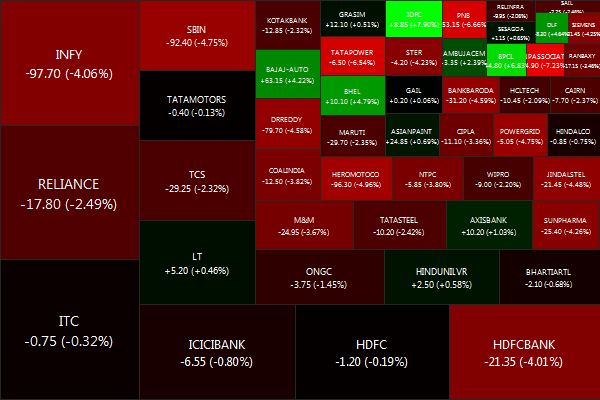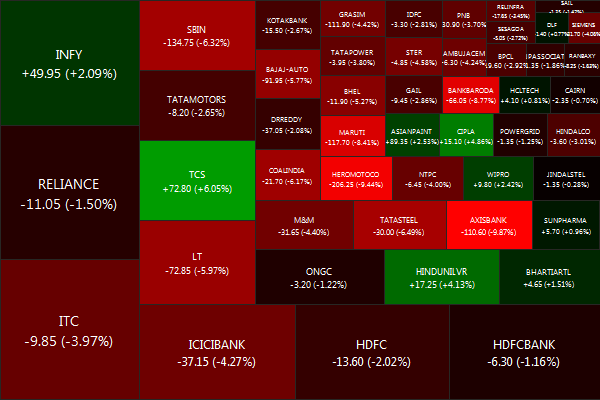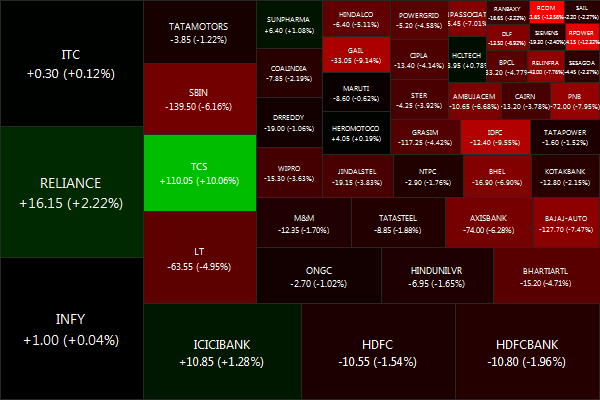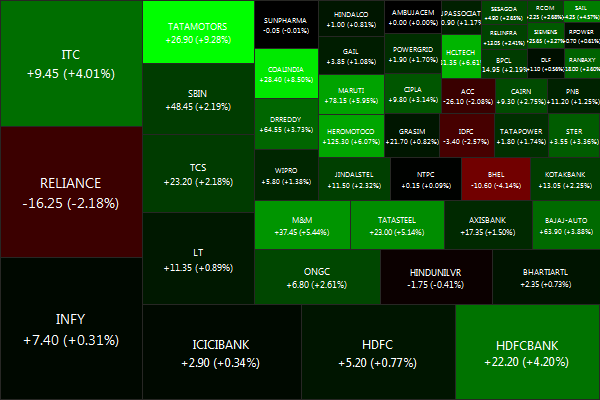The NIFTY ended on a negative tone, drifting down -1.48% for the week.
Biggest losers were TATAMOTORS (-13.08%), BHEL (-9.35%) and RELINFRA (-7.85%).
And the biggest winners were SESAGOA (+7.48%), STER (+5.65%) and SBIN (+4.27%).
Decliners eclipsed advancers 32 vs 17
Gold: +1.82%, Infrastructure: +1.21%, Banks: -2.09%.
Daily news summaries are here.
